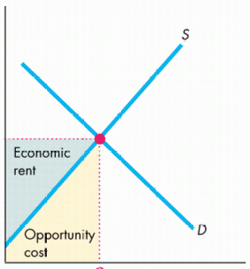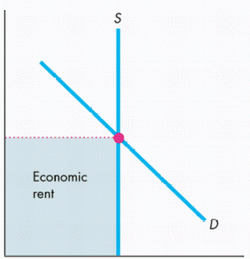Do you want BuboFlash to help you learning these things? Or do you want to add or correct something? Click here to log in or create user.
Subject 1. Types of Profit Measures
#cfa #cfa-level-1 #economics #has-images #microeconomics #reading-15-demand-and-supply-analysis-the-firm
Accounting Profit
Accounting profit = Total revenue - Total accounting costs
Economic profit = Total revenue - Total opportunity costs
Accounting Profit = $55,000
Entrepreneur's own forgone salary = $40,000
Foregone interest on capital = $1,000
Foregone rent = $2,000
Economic Profit = 55,000 - 40,000 - 1,000 - 2,000 = $12,000Accounting profit = Economic profit + Normal profit

Accounting profit is the profit used by accountants to determine a firm's net income.
Economic profit equals a firm's total revenue minus its total opportunity costs of production.
The total opportunity costs include both explicit and implicit costs of all the resources used by a firm. Implicit opportunity cost is the unearned or nominal profit that the resource-owner did not make from investing in the next best alternative. As a result, you can have a significant accounting profit with little to no economic profit.
Example
Suppose a person uses his own resources, land, capital, and time in the production of goods. The opportunity costs of these resources are shown below:
Accounting Profit = $55,000
Entrepreneur's own forgone salary = $40,000
Foregone interest on capital = $1,000
Foregone rent = $2,000
Economic Profit = 55,000 - 40,000 - 1,000 - 2,000 = $12,000
For publicly traded corporations, economic profit is accounting profit - required return on equity capital.
When economic profit is zero, a firm's accounting profit becomes normal profit, which is effectively the total implicit opportunity cost.
When a firm's total revenues are just equal to its total costs, its economic profit is zero, but it still makes accounting profit. Zero economic profit does not mean that the firm is about to go out of business. Instead, it just indicates that the owners are receiving exactly the market (normal) rate of return on their investment.
Economic Rent
The total income received by an owner of a factor of production is made up of its economic rent and its opportunity cost.
- Economic rent is the income received by the owner of a factor of production over and above the amount required to induce that owner to offer the factor for use.
- The opportunity cost of using a factor is the income required to induce its owner to offer the resource for use, which is the value of the factor in its next best use.
The following figure illustrates the division of a factor income into economic rent and opportunity cost.

The portion of income comprised of economic rent depends upon the elasticity of supply for the factor.
- The less elastic the supply for a factor, the greater the share of income that is comprised by economic rent. When the supply is perfectly inelastic, all of the income is economic rent.

- The more elastic the supply for a factor, the smaller the share of income that is economic rent. When the supply is perfectly elastic, none of the income is economic rent.

If you want to change selection, open original toplevel document below and click on "Move attachment"
Summary
| status | not read | reprioritisations | ||
|---|---|---|---|---|
| last reprioritisation on | suggested re-reading day | |||
| started reading on | finished reading on |
Details
Discussion
Do you want to join discussion? Click here to log in or create user.